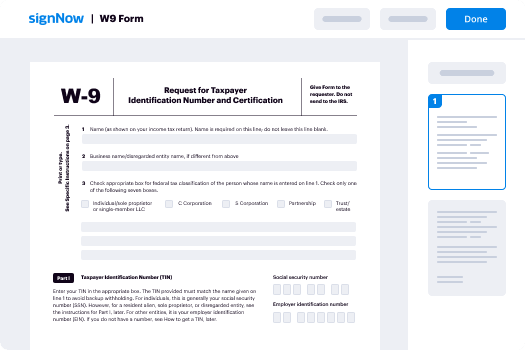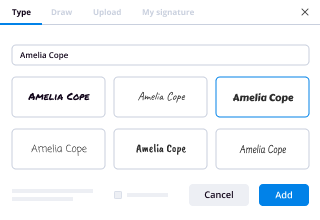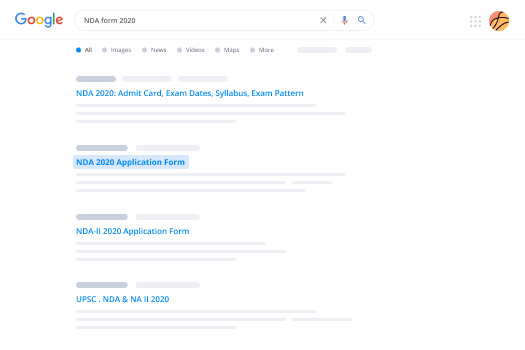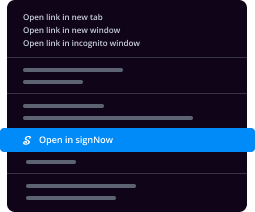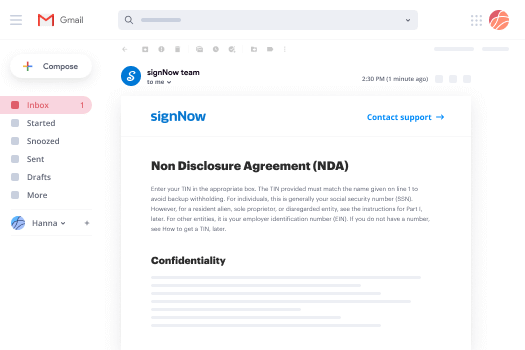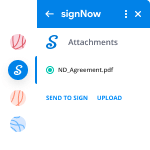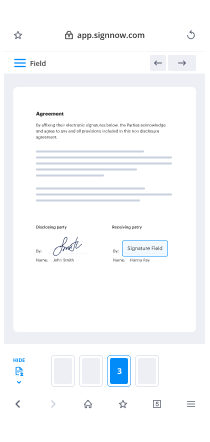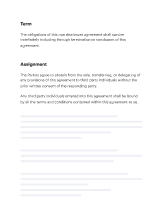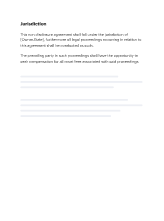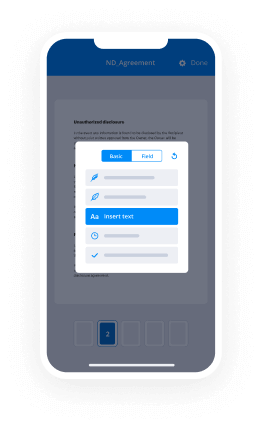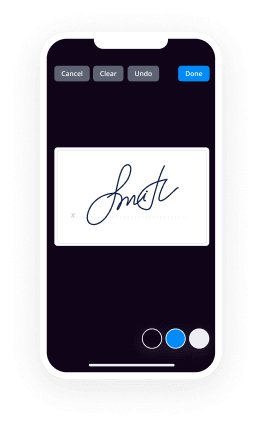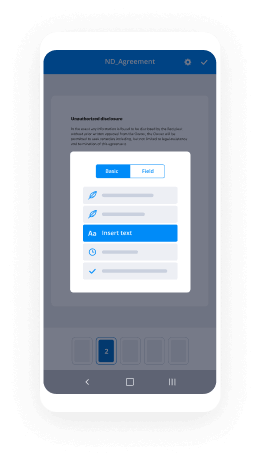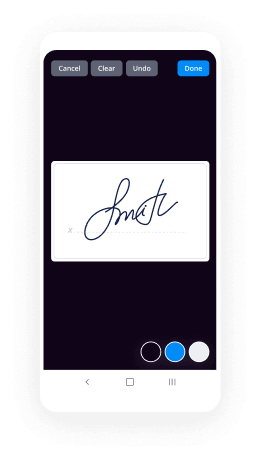JDF 82 R6-15 INSTRUCTIONS FOR COLLECTING A JUDGMENT AND COMPLETING A WRT OF GARNISHMENT Page 1 of 6
©2013, 2014, 2015 Colorado Judicial Department for use in the Courts of ColoradoINSTRUCTIONS FOR COLLECTING A JUDGMENT AND
COMPLETING A WRIT OF GARNISHMENTGENERAL INFORMATION� The Court must have awarded a money judgment in your favor. � The money judgment is good for six years in County Court and for 20 years in District Court. � The Court cannot collect your money judgment for you. � For additional information, please review Colorado Rules of County Court Civil Procedure - Rule 369 and
Rule 403. � For additional information, please review Colorado Rules of Civil Procedure - Rule 69 and Rule 103. � If you have a disability and need a reasonable accommodation to access the courts, please contact your local
ADA Coordinator. Contact information can be obtained from the following website:
http://www.courts.state.co.us/Administration/HR/ADA/Coordinator_List.cfm
COMMON TERMS
� Plaintiff(s): The person(s), company or other entity filing a Complaint against another
person(s), company or other entity.
� Defendant(s): The person(s), company or other entity that the case is filed against.� Garnishee(s) The person(s) or company the Writ is being served upon.� Judgment Debtor(s): The person(s), company or other entity who owes the money as ordered by the
Court.
� Judgment Creditor(s): The person(s), company or other entity who should receive the money as
ordered by the Court.
� Service of Process: The official means by which a Defendant is notified that a lawsuit has been filed
against him/her and provided a copy of the complaint and a description of the
person’s rights and obligations as a party to the case.
� Interrogatories: Written set of questions prepared by the Judgment Creditor and served to the
Judgment Debtor.
� Return Date: The date that the Defendant must file his/her answer by and/or appear in Court
that is listed on the Summons.
� Continuing Garnishment: The exclusive procedure for withholding the earnings of a Judgment Debtor for
successive pay periods for payment of a judgment debt.
� Transcript of Judgment: A one-page document that states the name of the Judgment Debtor, Judgment
Creditor and the date and amount of the judgment.
� Satisfaction of Judgment: The document stating the Judgment Debtor has satisfied the judgment. This
must be filed by the Judgment Creditor with the Clerk of Court in order to remove the
judgment from credit reports as being unpaid. The satisfaction can be “Full” or
“Partial”.� May: In legal terms, “may” is defined as “optional” or “can.”� Shall: In legal terms, “shall” is defined as “required.” These standard instructions are for informational purposes only and do not constitute legal
advice about your case. If you choose to represent yourself, you are bound by the same rules
and procedures as an attorney. If you do not understand this information, please contact an attorney.
JDF 82 R6-15 INSTRUCTIONS FOR COLLECTING A JUDGMENT AND COMPLETING A WRT OF GARNISHMENT Page 2 of 6
©2013, 2014, 2015 Colorado Judicial Department for use in the Courts of ColoradoFEES� Fees that a party to the case my encounter are as follows: � Copy of Documents $.75 per page� Service Fees Varies (Payable to Process Server)� Issue Writ of Garnishment $45.00� Certification Fee $20.00� Transcript of Judgment $25.00� Execution $45.00� Satisfaction of Judgment $20.00� Hearing for Interrogatories $70.00
FORMS
To access a form online go to www.courts.state.co.us and click on the “Self Help/Forms” tab. The
packet/forms are available in PDF or WORD by selecting “All Court Forms and Instructions” and then
“Garnishments and Judgments”. You may complete a form online or you may print it and type or print legibly
in black ink. You may need all or some of these forms. Read these instructions carefully to determine what
forms you may need.
� JDF 76 General Motion � JDF 77 General Order � JDF 89 Notice to Garnishee, Application of Funds to Judgment and Release of Funds to Judgment Creditor � JDF 105 Pattern Interrogatories Under C.R.C.P. 369(g) - Individual � JDF 108 Pattern Interrogatories Under C.R.C.P. 369(g) - Business � JDF 111 Satisfaction of Judgment � Form 26 Writ of Continuing Garnishment � Form 27 Calculation of the Amount of Exempt Earnings � Form 28 Objection to Calculation of Amount of Exempt Earnings � Form 29 Writ of Garnishment with Notice of Exemption and Pending Levy � Form 30 Claim of Exemption to Writ of Garnishment with Notice � Form 32 Writ of Garnishment - Judgment Debtor other than Natural Person
FIRST STEPS TO COLLECTING YOUR JUDGMENTStep 1: First ask the Judgment Debtor to pay, preferably in writing.Step 2: If the Judgment Debtor refuses to pay and you do not know where the Judgment Debtor works,
banks or owns property, you will need to have the interrogatories served. The Judgment Debtor is ordered by the
Court to answer the questions truthfully. The answers provided in the interrogatories can be helpful in collecting
your judgment, such as employer’s name and pay dates, location of bank accounts and/or other assets.
� If you received an Order for Entry of Judgment, the Court has already authorized you to serve the
Interrogatories and for the Judgment Debtor to answer them. Pursuant to Rule 369(g) of the Colorado
Rules of Civil Procedure, the Judgment Creditor can automatically issue the Form Interrogatories (JDF
105 or 108) as part of the judgment order without further order of the Court. � If you want to use any interrogatories other than the Pattern Interrogatories forms mentioned in these
instructions, you will need to have them approved by the court before they can be used. Step 3: Serve the Court Order and the interrogatories on the Judgment Debtor.
� You can have the Judgment Debtor served by doing one of the following:
JDF 82 R6-15 INSTRUCTIONS FOR COLLECTING A JUDGMENT AND COMPLETING A WRT OF GARNISHMENT Page 3 of 6
©2013, 2014, 2015 Colorado Judicial Department for use in the Courts of Colorado� Select either the Sheriff’s Department, a private process server, or someone you know who is 18
years or older and not a party to the action and who knows the rules of service to serve the Judgment
Debtor. The process server must follow the Service of Process requirements stated in Rule 4 or 304. Be
sure to direct the sheriff, private process server, or person serving the Interrogatories to return the
Affidavit of Service to the Court as soon as possible after service has been completed. OR�Ask the court clerk to mail the interrogatories to the Judgment Debtor. You will be responsible for
the cost of mailing.Step 4: Await return of the interrogatories.� The answers must be filed with the Court and a copy mailed to the sender no later than 14 days after the
Judgment Debtor received them.Step 5: Upon receipt of the interrogatories, you are ready to file a Writ of Garnishment OR you may
request to place a lien against real estate owned by the Judgment Debtor. If the Judgment Debtor does not
comply with the order in answering the interrogatories, you will need to file a request for an Order to Issue a
Contempt Citation to the Judgment Debtor, with return of service of interrogatories on debtor.STEPS TO FILING A WRITStep 1: Determine Appropriate Forms to Complete.
Determine the appropriate writ of garnishment that you wish the Court to issue based on the types listed below (A–C) and the information you obtained from the interrogatories. Below each type of garnishment is a listing of the
forms that you will need:A. Garnishment of an Individual’s Wages � Form 26 - Writ of Continuing Garnishment
Required Paperwork - 1 original and 3 copies � Form 27 - Calculation of the Amount of Exempt Earnings
Required Paperwork - 1 original and 2 copies � Form 28 - Objection to Calculation of the Amount of Exempt Earnings
Required Paperwork - 1 original B. Garnishment of an individual’s bank / savings institution, or assets other than earnings � Form 29 - Writ of Garnishment with Notice of Exemption and Pending Levy
Required Paperwork - 1 original and 4 copies (5 if two debtors) � Form 30 - Claim of Exemption to Writ of Garnishment with Notice
Required Paperwork - 1 original C. Garnishment of debtor which is a business entity � Form 32 - Writ of Garnishment - Judgment Debtor other than Natural Person
Required Paperwork - 1 original and 2 copies. Step 2: Complete Forms.� Line 1. Original Amount of Judgment Entered or the revived amount, if applicable. � Original amount refers to the actual judgment amount entered by the magistrate or judge. If court
costs, interest, and/or attorney fees were granted on the judgment date, include them as part of the
original judgment. � Revived amount refers to the judgment amount that remains unsatisfied, plus any costs and interest
granted. The revived amount will be per the Order for Revival of Judgment – JDF 125. You must complete Lines 1 – 5 on the Writ in the upper portion of the form .
JDF 82 R6-15 INSTRUCTIONS FOR COLLECTING A JUDGMENT AND COMPLETING A WRT OF GARNISHMENT Page 4 of 6
©2013, 2014, 2015 Colorado Judicial Department for use in the Courts of Colorado� Line 2. Plus any Interest Due on Judgment This is the amount of interest accrued from the date of judgment. Unless there was a different interest
rate granted on the judgment date, interest is 8% per annum for all cases except child support
arrearages, which is 12% per annum.� Line 3. Taxable Costs (including estimated cost of service of this Writ) This refers to post-judgment costs only. Cost of issuance of the Writ, service costs, etc.� Line 4. Less any Amount Paid Enter all amounts you have received as payment on the judgment here.� Line 5. Principal Balance/Total Amount Due and owing � Fill in the name of the employer, bank, etc. on whom the Writ is to be served. You will need to provide
the process server with complete address(es) to serve the documents. This can be included on the
Return of Service or on separate documentation. � Section “c” requires that you choose how checks are payable. Make Checks Payable to: � If you are pro-se (representing yourself), your checks must be made payable to the Clerk of the
Court. � If you are a judgment creditor with an attorney entered on your case or a licensed collection agency,
checks may be made payable to either to you or your attorney. Step 3: File Writ and appropriate documents with the Court.
The Clerk will issue the Writ upon your payment. $45.00. If you do not have an attorney and are requesting a
garnishment of the Judgment Debtor’(s) wages please provide self-addressed stamped envelopes so that the
Court can forward money received from the garnishee/employer.Step 4: Serve the Writ and appropriate documents.Select either the Sheriff’s Department, a private process server, or someone you know who is 18 years or older
and not a party to the action and who knows the rules of service to serve the Garnishee. There is a service fee
that is payable to the Sheriff’s Department or Private Process Server.� You can locate private process servers in the yellow pages under Process Servers. � Make sure you provide the process server with complete address information to serve the Writ. � If you need to have the Writ served to a bank, employer, etc. outside of Colorado, you will need to follow
the rules of service in that state. � When service is complete, proof of service (Return of Service) must be filed with the Court. � Make sure you have the appropriate copies and any other forms as described below to provide to
the process server. A. Writ of Continuing Garnishment (Wages) Form 26: � Two copies of the Writ are served on the Garnishee together with a blank copy of Form 28. B. Writ of Garnishment with Notice of Exemption and Pending Levy (Bank Account, Tenants,
Etc.) Form 29: � A copy of the Writ is served on the Garnishee together with a blank copy of Form 30. � A copy of the Writ is served on the Judgment Debtor. � Provide a self-addressed stamped envelope to receive the completed Writ. C. Writ of Garnishment Judgment Debtor other than Natural person (Judgment Debtor is
Business) Form 32: � A copy of the Writ is served on the Garnishee. Step 5: Responsibilities of the Garnishee and Judgment Creditor after Service.Go to Section A, B, C as appropriate.A. Writ of Continuing Garnishment (Wages) Form 26 � The Garnishee shall complete the Writ by answering the questions on page 2. Complete the remaining two sections on the bottom portion of the form.
JDF 82 R6-15 INSTRUCTIONS FOR COLLECTING A JUDGMENT AND COMPLETING A WRT OF GARNISHMENT Page 5 of 6
©2013, 2014, 2015 Colorado Judicial Department for use in the Courts of Colorado� The Garnishee shall deliver a copy of the completed Writ, together with the Calculation of the Amount
of Exempt Earnings (Form 27) and a blank copy of the Objection to the Calculation of the Amount of
Exempt Earnings (Form 28) to the Judgment Debtor at the time the Judgment Debtor receives
earnings for the first pay period affected by such writ. For all subsequent pay periods within the
effective garnishment period, the Garnishee shall provide a copy of the Calculation of the Amount of
Exempt Earning (Form 27) to the Judgment Debtor for that pay period. � The Garnishee shall file the answer to the Writ with the Clerk of Court and send a copy to the
Judgment Creditor no less than 7 and no more than 14 days following the time the Judgment Debtor
receives earnings for the first pay period affected by the Writ or 42 days following the date such Writ
was served upon the Garnishee, whichever is less. � If the Judgment Debtor does not file an objection with the Court within 14 days of receiving a copy of
the Writ, the Garnishee shall send the nonexempt earnings to the individual designated on page 2
section “e” of the Writ. If you are pro se (representing yourself), the Court will send you the money in
the self-addressed stamped envelope that you provided when you filed the Writ. � If the Judgment Debtor does object, you will receive a copy of the objection and a hearing will be set
within 14 days. B. Writ of Garnishment with Notice of Exemption and Pending Levy (Bank Account, Tenants, Etc.)
Form 29: � The Garnishee shall complete the Writ by answering the questions on page 2. � The Garnishee shall file a completed copy with the Court and mail a copy to the Judgment Creditor. � If the Garnishee is a Bank and is holding money or if the Garnishee has possession of the identified
property, the Judgment Creditor shall serve a copy of the completed Writ along with a blank copy of
the Claim of Exemption to Writ of Garnishment with Notice (Form 30) to the Judgment Debtor. � If the Judgment Debtor does not file a written Claim of Exemption with the Court within 14 days of
receiving a copy of the Writ, complete the Notice to Garnishee, Application of Funds to Judgment,
and Release of Funds to Judgment Creditor (JDF 89). This form must be filed and approved by the
Court before the Garnishee who is holding money can release such funds. � If the Garnishee is holding money of the Judgment Debtor, such as a bank, the Garnishee shall pay
the amount not to exceed the total amount due and owing on the judgment to the Court. � Once the Court has signed the Notice to Garnishee, Application of Funds to Judgment, and Release
of Funds to Judgment Creditor (JDF 89), it is the responsibility of the Judgment Creditor to get the
Notice (JDF 89) to the Garnishee who is holding the funds. � If the Judgment Debtor does object, you will receive a copy of the objection and a hearing will be set
within 14 days after the filing of such objection. C. Writ of Garnishment Judgment Debtor other than Natural Person (Judgment Debtor is Business)
Form 32: � The Garnishee shall complete the Writ by answering the questions on page 2. � The Garnishee shall file a completed copy with the Court and mail a copy to the Judgment Creditor. � If the answers to the writ of garnishment show that the Garnishee has property or holds money owed
to the Judgment Debtor, the Court shall enter judgment in favor of the Judgment Debtor and against
the Garnishee for the use of the Judgment Creditor. � This order shall direct the Garnishee to deliver personal property to the sheriff or if the Garnishee
holds money of the Judgment Debtor bank to pay the amount not to exceed the total amount due and
owing on the judgment to the Registry of the Court.A Writ of Continuing Garnishment is good for 182 days for any judgment ordered on or after
August 8, 2001 and for 91 days for any judgment ordered prior to August 8, 2001. When the
Effective Garnishment Period expires, you will need to complete a new Writ, file it with the
Court and Serve the Garnishee.
JDF 82 R6-15 INSTRUCTIONS FOR COLLECTING A JUDGMENT AND COMPLETING A WRT OF GARNISHMENT Page 6 of 6
©2013, 2014, 2015 Colorado Judicial Department for use in the Courts of ColoradoSTEPS TO REQUESTING A LIEN AGAINST REAL ESTATEStep 1: Ask the Court for a Transcript of Judgment. The cost is $25.00.Step 2: Take the Transcript of Judgment to the County Clerk and Recorder where the Judgment Debtor
owns the real estate. The lien continues for 6 years if the judgment was awarded in County Court
and for 20 years if the judgment was awarded in District Court.
Step 3: Advise the Judgment Debtor that he or she will not be able to sell or mortgage the real estate until
the Judgment amount has been paid and you release the judgment lien.
WHAT TO DO AFTER YOU COLLECT YOUR JUDGMENTStep 1: Complete a Satisfaction of Judgment (JDF 111) and file with the Court.Step 2: Mail a copy of the Satisfaction of Judgment to the Judgment Debtor, and Garnishee if any.Step 3: If you placed a lien on the real estate owned by the Judgment Debtor, notify the Clerk and
Recorder to release the lien.
Useful suggestions for finishing your ‘Self Help Forms Garnishments Colorado Judicial Branch’ online
Are you fatigued by the burden of handling paperwork? Look no further than airSlate SignNow, the premier eSignature solution for individuals and small to medium-sized businesses. Bid farewell to the monotonous process of printing and scanning documents. With airSlate SignNow, you can effortlessly fill out and sign documents online. Utilize the powerful features embedded in this user-friendly and cost-effective platform and transform your method of document management. Whether you need to authorize forms or gather signatures, airSlate SignNow manages it all smoothly, requiring only a few clicks.
Adhere to this step-by-step guide:
- Access your account or sign up for a complimentary trial of our service.
- Select +Create to upload a file from your device, cloud storage, or our form repository.
- Open your ‘Self Help Forms Garnishments Colorado Judicial Branch’ in the editor.
- Click Me (Fill Out Now) to finalize the document on your end.
- Add and designate fillable fields for others (if needed).
- Continue with the Send Invite options to solicit eSignatures from others.
- Download, print your version, or convert it into a versatile template.
No need to worry if you must collaborate with your colleagues on your Self Help Forms Garnishments Colorado Judicial Branch or send it for notarization—our platform offers everything required to accomplish such tasks. Register with airSlate SignNow today and take your document management to greater levels!


